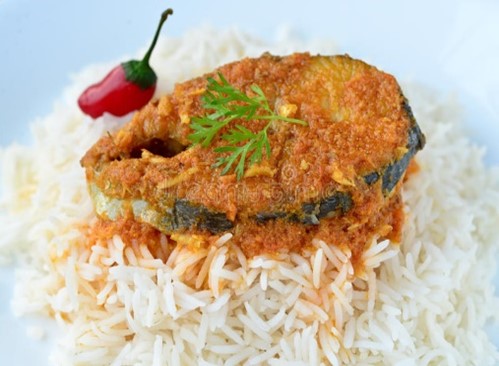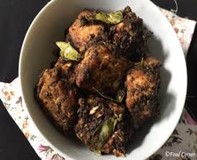Where have all the Fish gone? Corporate Capture and Import Dependency Deepen the Debt trap
Posted on November 25th, 2022
Darini Rajasingham-Senanayake
A great transformation in food culture and nutrition is taking place in Sri Lanka following various exogenous economic shocks: The traditional, nutritious ‘rice and fish’ diet, common throughout coastal Asia is increasingly substituted with imported maize or corn-fed chicken, white wheat flour breads, instant noodles and processed food.
For the first time in history the humble fish lunch packet was more expensive than a chicken lunch pack in this island at the center of the Indian Ocean! So too, the nutritious local Jack fruit, Polos and cashew nut curry, high protein staples for vegetarians, has been replaced with imported and chemically-processed Soya ‘meat’. Meanwhile, imported Walnuts, hazelnuts and peanuts are available, and Norwegian Salmon was imported to feed tourists and local elites amid a US dollar debt Default.
Rather than leverage Sri Lanka’s high value fisheries resources plentiful in the island’s Exclusive Economic Zone (EEZ), as a policy priority, President Ranil Wickremesinghe recently reversed a ban on Open Account imports to enable the import of corn, maize seed and soybean for poultry farmers to feed livestock according to a Gazette notice last month– despite the dollar debt crisis.[i]
The ban on open account imports to save dollars was implemented after the Staged Default in April this year but now stands reversed based on narratives of looming ‘famine’ and ‘climate catastrophe’ that legitimize large import bills—from maize to electric cars. These enable politically connected traders and businessmen to make windfall profits (Disaster Capitalism), as with the Sugar Scam and promote a culture of import dependency and consuming beyond ones means, while deepening the Dollar debt trap.
Rice and Fish in Asian Cultures
For centuries, fresh caught fish with country (Nadu), rice has been a staple of the national diet. Generations of healthy and happy children have grown up eating rice and fish, a diet high in the required protein, calcium and micronutrients for growth.


On festive occasions the traditional coconut-milk rice (kiri- bath) was always served with Tuna fish Ambulthiyal (sour fish a southern preparation), or miris malu (chilly fish). In Jaffna and the north, Meen Kolumbu is standard and often accompanies milk rice.
In many Asian cultures, from Bengal to Indonesia and Vietnam, ‘rice and fish’ is symbolic of abundance. The Mandarin word for fish,” yu,” has the same pronunciation as the word for surplus” or abundance.” The new year blessing, nian you yu,” expresses wishes for abundance and prosperity—or fish—in the coming year, and no Southeast Asian banquet is complete without fish.
Tuna fish was unavailable or unaffordable for much of the year in Sri Lanka, while small fish had disappeared for months from dinner and lunch tables. Even Karavela or dried fish, the poor person’s protein was unaffordable. Meanwhile, canned fish was unavailable or unaffordable in an island nation which should be exporting rather than importing tinned-fish caught in Sri Lanka’s extensive marine Exclusive Economic Zone (EEZ).
From Rice and Fish to Corn and Chicken: Nutrition and Disease Patterns
The current generation of Sri Lankans is the first to source meat-based protein from imported maize-fed battery farmed chickens often filled with antibiotics rather than fresh fish. Today prawns from environmentally-destructive aqua-culture farms are promoted rather than fresh fish from the seas of Sri Lanka.
Incidence of malnutrition, obesity and non-communicable disease, like heart attacks, diabetes, high blood pressure and cholesterol (along with drugs to mitigate the impacts of these consumption and life-style changes), have become the main causes for death and disease in the island, primarily due to changing food culture and nutrition. These, non-communicable diseases were ‘Covid-19 co-morbidities”.
Amid stories of children fainting in school due to lack of protein, Triposha and Samaposha, the traditional children’s food supplement, which consisted of red rice, kurakkan and green gram, high in protein and micronutrients are being replaced with milk powder, corn, and processed Soya, imported by large Multinational and Agri-business Corporations (MNC). Corn starched and soya is used in processed food with high chemical and palm oil content.
UNICEF Children’s Fund has reported that 30 percent of Sri Lankan children suffer from malnutrition since the dollar debt Default in April this year. So too stunting and wasting have increased in this fertile tropical island, blessed with 2 monsoons, plentiful rain and rice harvests and extensive fisheries resources.
Of course, corn, and wheat-based products like ‘short-eats’ snacks made of pastry and sugar-filled cakes that are advertised in the media are both convenient and popular with many urban fast food consumers and producers. During the Covid-19 panicdemic there was an epidemic of sugar filled cup cakes and cookies by home bound bakers, which were sold on various social media platforms!
Wheat and maize are more vulnerable to aflatoxins that thrive in hot and humid climates and other biohazards than indigenous rice variates. For instance, the bio-warfare lab manufactured Fall Army Worm (Sena Caterpillar), destroyed corn and other gain crops a few years ago in South Asia, Africa and South Asia. However, indigenous rice crops were relatively undamaged as they were much more resistant to the imported Sena bug that destroyed food security in many countries in the Global South.
The transformation of the traditional, nutritious ‘Rice and fish’ diet to an imported maize-fed chicken (and eggs), diet has been on-going for some time amid Disaster Capitalism and the corporate capture of fisheries grounds, agricultural and forest lands enabled by various exogenous economic shocks” for structural adjustment of the sectors, including Covid-19 Lockdowns, followed the 2019 ISIS claimed Easter Sunday attacks on coastal communities that brought extended lockdowns of fisheries harbors. In 2022, a fuel blockade during the dollar debt default meant that fisheries communities did not have Kerosene fuel for their boats and fishing crafts.
These exogenous economic shocks benefit foreign trawler companies operating in the Seas of Sri Lanka, and enable what Naomi Klein termed ‘Disaster Capitalism” as well as the global agribusiness and corporate takeover of national food systems and policy process. Increasingly the corporate capture of fisheries areas for prawn farms or in the name of environmental protection (Marine Protection Areas), as well as, land areas are apparent through new legal frameworks, and new land and coastal laws as the Fisheries and Agriculture sectors are structurally adjusted for corporate agribusinesses, purportedly for export-led growth to earn US dollars.
Tuna Vanishes as Import dependency increases
For decades the Fisheries sector has contributed a mere 2.5 percent to Sri Lanka’s national economy while citizens were increasingly deprived of fresh fish and the nutrition if affords. Grade 1 sushi Bluefin tuna currently fetches up to US$1,000 per kilo wholesale in Tokyo. Prices for yellowfin tuna, which is more commonly found in Sri Lankan waters, range from $500 to $700. [ii]
So where have all the strategic island’s Yellowfin Tuna from its extensive marine EEZ, which is 15 times the island’s land extent under the United Nation’s Convention on the Law of the Sea (UNCLOS), gone?
Although Indian Fishers are routinely blamed in the local media for over fishing in Sri Lankan waters in the north, the Indian Ocean Tuna Commission’s (IOTC), Data show that high value Tuna from Sri Lanka ends up mainly in the European Union, US, Japan, Korea and other Non-Indian Ocean Distant Water Fishing States.[iii]
The Seas of Sri Lanka are increasingly over-fished by French, EU and other Distant Water Fishing States whose trawler companies have signed contracts with corrupt local fisheries ministry officials, while local children faint in school due to lack of protein.
However, rather than set policy priorities to protect and leverage the strategic island’s valuable fisheries resources given increase in malnutrition that various UN agencies predict, and despite the dollar debt crisis, the Colombo regime promoted the import of copious amounts of maize seed, corn and soybeans to grow and feed chicken amid dubious narratives of a famine.
Record Spending on Maize Imports
Economy Next reported this month that ‘Sri Lanka has spent a record 9.6 billion rupees for maize imports this year, government data showed, purportedly due to shortage of the grains for animal feed industry after the government’s agrochemicals ban took the toll’.[iv] The country spent 573.4 million rupees to import maize seeds and 9 billion rupees for other maize related products including maize ears, the data showed. Maize crop needs pesticides to thrive as the grain plant is susceptible for pests and diseases, analysts say. Agrochemical ban has led to poultry feed expensive because of the price hike in the maize. And that resulted in more imports of maize this year, and industry official told Economy Next.
Like the infamous Sugar scam, would there be a maize and soya scam soon? After all, from Bond scams at the Central Bank to fund the United National Party’s (UNP), 2015 election campaign, to organic fertilizer and the recent sugar scams, bond traders and business oligarchs associated with successive Ranil Rajapakse regimes for ‘insider trading’ have made big profits during staged ‘scarcities’. Simultaneously the export of Sri Lanka’s high value food and human resources are being promoted to earn extra dollars, heedless of the long-term development costs.
Deepening debt trap and Import Dependency on the Eve of Independence
This week a Gazette relaxing import restrictions on apparel, cosmetics, perfumes, ceramics Air conditioners, freezers washing machines was issued amid a deepening US dollar debt trap. Colombo’s neo-liberal President (backed by the ‘Force’ in Washington according to Donald Lu, Secretary of State for South and Central Asia), seems intent on promoting a culture of over-consumption and import dependence that caused the Dollar crisis, rather than a policy mix that includes import substitution and leveraging local resources
On the eve of 75 years of putative ‘independence” are the current Colombo regime’s Economic Policies designed to deepen neocolonialism and the IMP’s inroads into the country’s trade and economic policy space? Would not mixed economic policies with emphasis on import substitution rather than import dependency be more appropriate to escape the Sovereign Bond debt trap, and leverage the island’s abundant marine and valuable mineral, including Graphite and Rare Earth Minerals.
Finally, Sri Lanka’s missing fish seem a metaphor for 75 years of lost ‘independence’. Neo-colonialism, donor dependency and globally networked local corporate and political corruption has also contributed to land-lock, blockade, under-develop, and enable looting of the strategic island’s natural and human resources, with Colombo’s current policy of promoting talent and brain drain to earn a few extra dollars heedless of the long-term development costs also clearly benefiting former colonial powers.
[i] https://economynext.com/sri-lanka-to-allow-maize-soybean-imports-on-open-account-100061/
[ii] https://www.srilankabusiness.com/blog/radical-new-boat-will-significantly-boost-sri-lankas-tuna-exports.html
[iii] https://www.theguardian.com/environment/2022/may/26/european-fishing-fleets-accused-illegally-netting-tuna-indian-ocean; also; https://www.theguardian.com/environment/2021/mar/05/eu-accused-of-neocolonial-plundering-of-tuna-in-indian-ocean
[iv] https://economynext.com/sri-lanka-spends-record-amount-on-maize-imports-after-agrochemical-ban-101819/